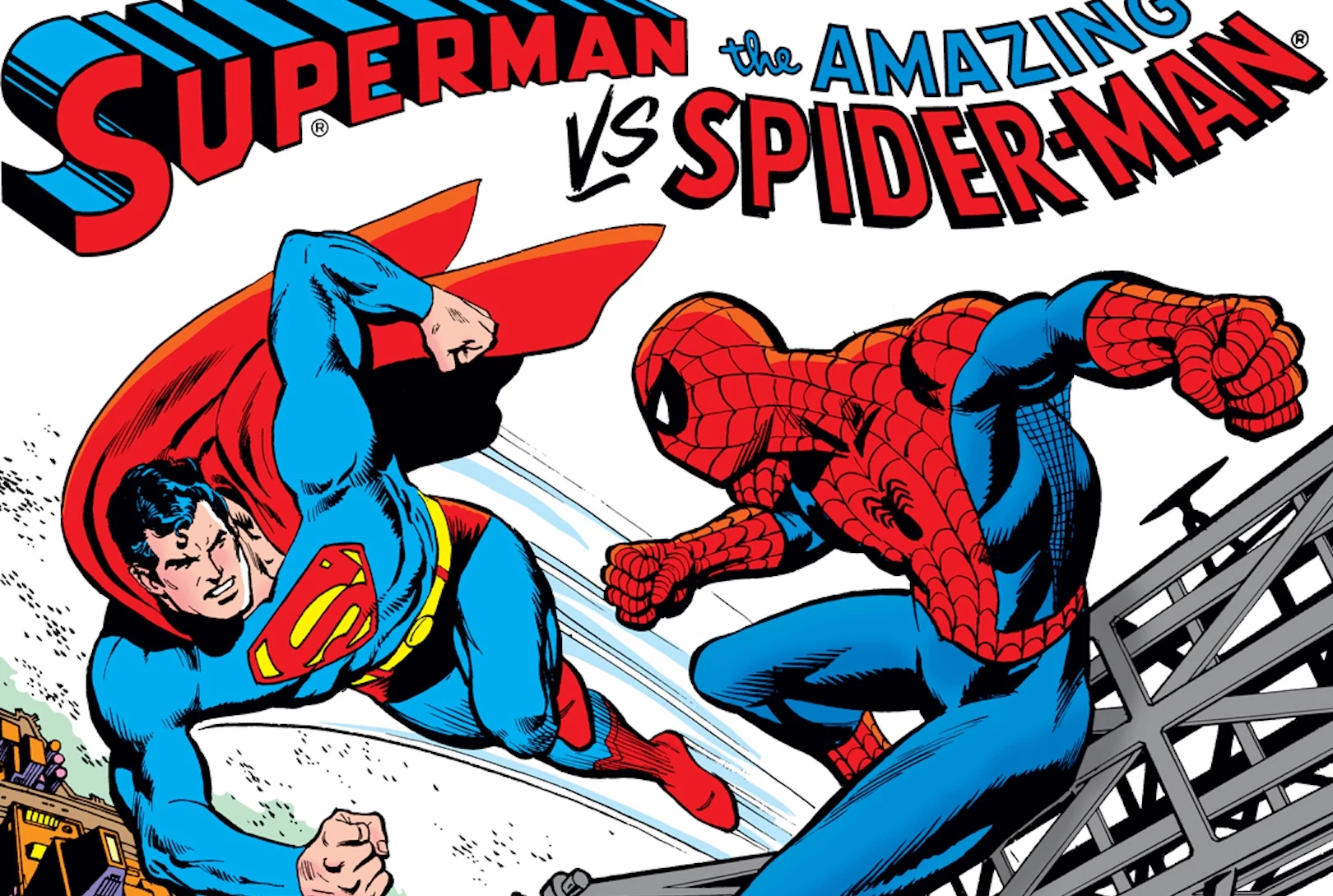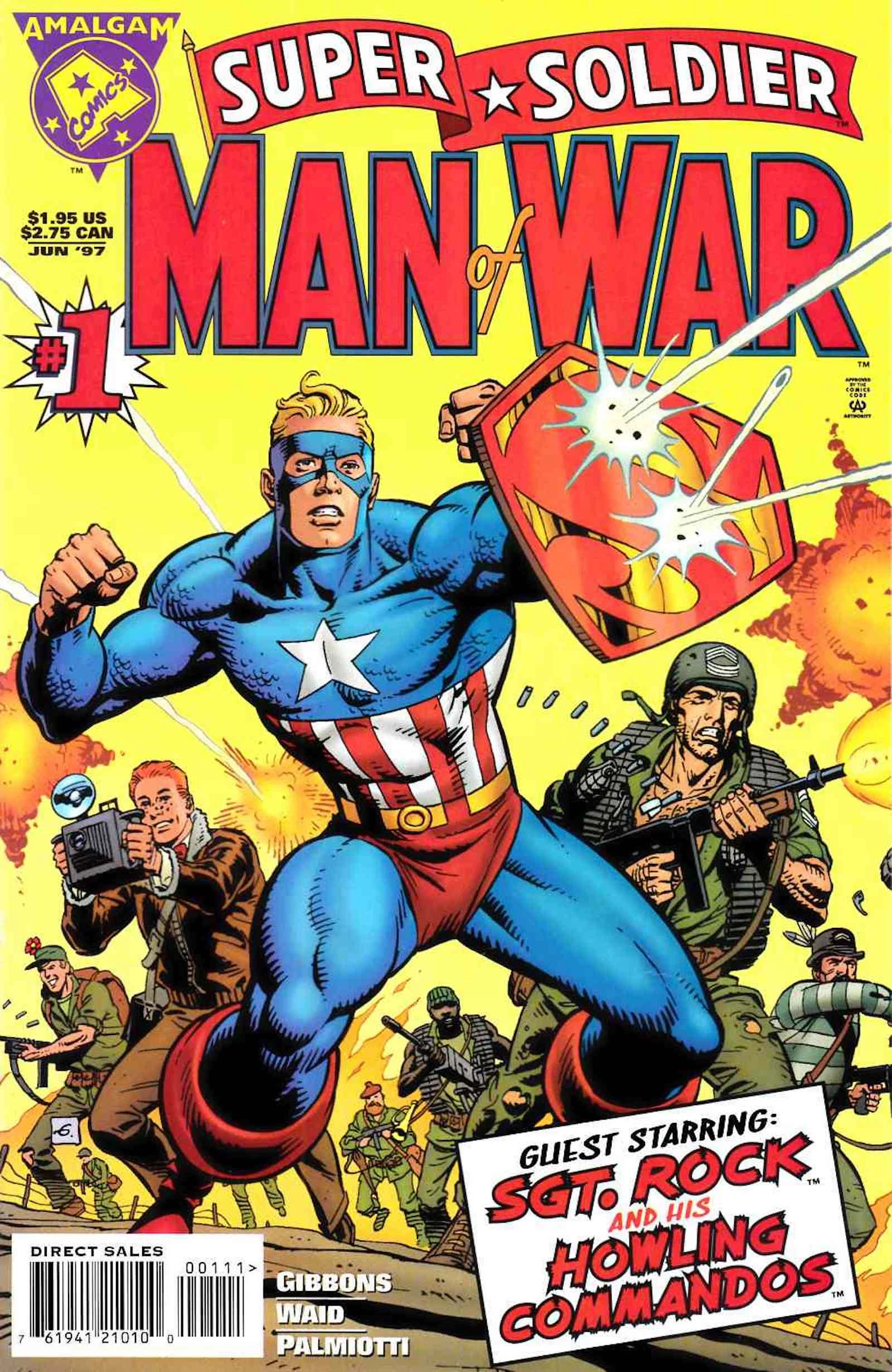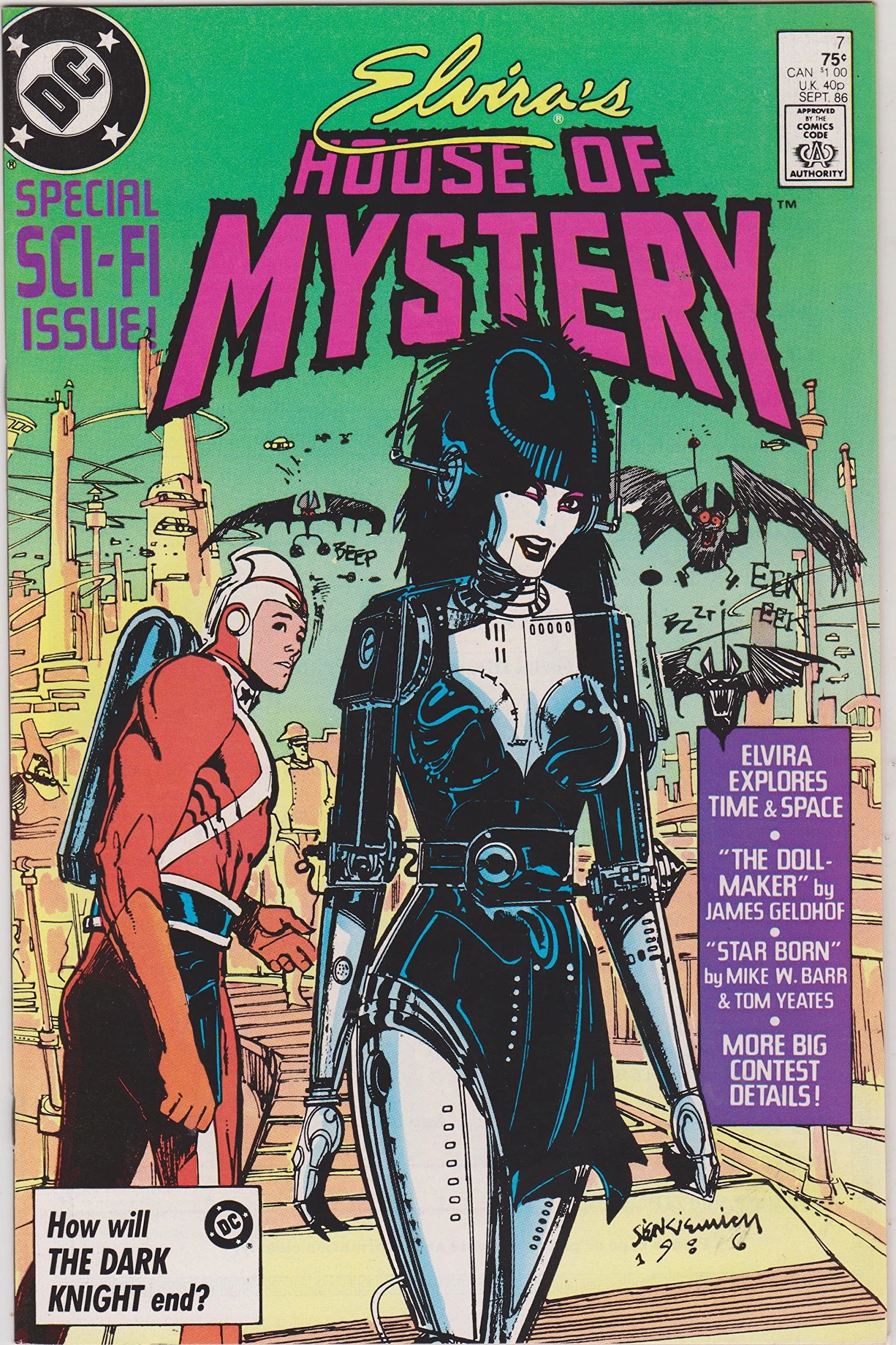
The two biggest names in comics are meeting for the first time in decades.
DC and Marvel revealed today that they will be publishing two new team-up comic books in Spring 2026. These comics will bring together two of their most popular characters: Superman and Spider-Man. It’s a crossover event fans have been waiting for!
The two heroes first encountered each other in the groundbreaking Marvel and DC crossover comic, Superman vs. the Amazing Spider-Man – released half a century ago.
To celebrate its 50th anniversary in 2026, DC will be reprinting a new Treasury Edition of Superman vs. the Amazing Spider-Man #1 on January 7, 2026. Following that, on February 4th, they plan to release DC and Marvel Present: Superman and Spider-Man Treasury Edition #1, which features another Spider-Man and Superman team-up from the same era.

As a huge comic book fan, I remember being so excited when Marvel and DC started doing crossover comics after that initial team-up between Spider-Man and Superman. Things *really* took off in the ’90s – they released a ton of these crossover books, even pitting Darkseid against Galactus! Eventually, they created a big joint mini-series where the entire Marvel and DC universes collided in DC vs. Marvel (sometimes it was called Marvel vs. DC, depending on who published it). The outcome of that epic battle was wild – for a short time, they mashed up their characters into this combined “Amalgam Universe” filled with characters like Super Soldier (a mix of Captain America and Superman) and Dark Claw (Batman and Wolverine combined)!
However, collaborative crossovers between Marvel and DC abruptly ended and didn’t happen for many years. (These companies haven’t always had a smooth relationship, which is common among strong competitors.) Eventually, Marvel and DC started creating crossover comics together again in 2025, beginning with Marvel’s Deadpool/Batman #1, which arrived at comic shops recently. The DC side of this team-up, Batman/Deadpool #1, is scheduled for release on November 19.
Both Marvel and DC Comics will reveal who will be working on their Spider-Man and Superman comic books sometime in the future. They haven’t announced the creative teams yet, but will do so later on.
DC Comics That Can’t Become DC Movies

The Adventures of Jerry Lewis
In the 1950s and ’60s, DC Comics found great success with a comic book inspired by the humorous style of comedian Jerry Lewis. It initially featured both Lewis and his comedy partner Dean Martin, but continued as The Adventures of Jerry Lewis for another 80 issues after they split up. During this time, Jerry encountered several famous DC superheroes like Batman, the Flash, and Superman. With all of DC’s reboots and relaunches over the years, it can be confusing to determine Jerry Lewis’ current place in DC’s continuity. Perhaps a NICE LADY! can clarify if these stories are still considered official DC canon. Regardless, here’s one DC superhero who won’t be getting their own movie in the DCEU.

Amalgam Comics
For about 20 years, Marvel and DC Comics have kept their characters in separate universes. However, back in the 1990s, it was popular to have characters from both companies team up or fight each other. The biggest attempt at this was a large-scale event called DC vs. Marvel, which matched the most well-known heroes and villains from each comic book world against each other. Fans actually got to vote on the outcomes of many of the battles! The fights ended in a tie, which led to the creation of a temporary combined universe called the “Amalgam Universe.” This new universe featured a series of comics with combined characters, such as Super Soldier (Superman and Captain America), the JLX (a mix of the Justice League and X-Men), and Dr. Strangefate (Dr. Strange and Dr. Fate – not Brother Power, the Geek!).
The combined books were fairly successful, and the companies released another wave of Amalgam comics the following year. But it’s been 25 years since these characters (who are jointly owned by Marvel and DC) have had a major moment. While a DC vs. Marvel movie would be incredibly complicated to make, many fans likely started hoping for it after Spider-Man: No Way Home showed that seemingly impossible crossovers could become real.

Captain Action
Captain Action was a toy line introduced in the 1960s as a superhero-themed alternative to the popular G.I. Joe action figures. What made Captain Action unique was the ability to dress him up in costumes of other famous heroes, such as Superman, Spider-Man, and Flash Gordon. This concept proved successful enough to warrant a licensed DC comic book in 1968, which even featured an appearance by Superman. However, after only a few issues, Captain Action disappeared from DC Comics. While the toy line has been revived several times over the years, he hasn’t reappeared in a DC comic book since.

Doc Savage
Doc Savage is unique because he’s a hero who’s been associated with both DC and Marvel, yet hasn’t gotten a movie adaptation. The rights to publish new stories about this classic pulp character have shifted between the two companies over time. While some of these stories existed outside the main DC universe, DC tried to fully incorporate Doc Savage – along with other licensed pulp heroes – into their shared universe in the late 2000s with a series called “First Wave.” However, just like many other licensed comics, when the publishing agreement ended, the books were cancelled, and Doc Savage’s adventures ceased.

Elvira’s House of Mystery
The House of Mystery is a DC concept that has been used for a long time to present collections of scary stories-it’s similar to DC’s version of Tales From the Crypt. The comic book took an interesting turn in the late 1980s when it was renamed Elvira’s House of Mystery, featuring the well-known horror movie host as the narrator, much like the Cryptkeeper, leading readers through different stories. However, Elvira’s House of Mystery didn’t last for very long-less than a year-and wouldn’t really suit a DC movie. But as an HBO Max series, that could be a good fit.

Fallen Angel
DC Comics used to be very careful about keeping its main superhero universe separate from more mature content. They typically published adult-oriented stories and characters under different imprints, like Vertigo Comics. However, in 2003, they made a rare exception with Fallen Angel, a dark superhero story by writer Peter David and artist David Lopez. While it was never directly confirmed, the story strongly suggested that the main character was actually the same Supergirl that David had been writing for several years in the late 1990s and early 2000s, before a storyline reintroduced her as Superman’s cousin from Krypton.
Before this connection could be made clear, DC canceled the series. David then moved Fallen Angel to IDW, a competing publisher. After that, any resemblances to David’s Supergirl could only be hinted at, and the possibility of a Fallen Angel movie within the DCEU disappeared as well.

Masters of the Universe
Back in the 1980s, DC Comics obtained the rights to create Masters of the Universe comics. Before launching their own Masters miniseries, they first introduced He-Man and Skeletor into the DC Universe with an issue of DC Comics Presents, a series known for pairing Superman with a different guest character each month.
More recently, DC regained the Masters comics license and published a story that blended the He-Man characters with the heroes and villains from the popular Injustice fighting game series. A video game combining Injustice and Masters seems likely, but a movie? Not so much.

Peter Cannon, Thunderbolt
In the 1980s, DC acquired the rights to many characters from their competitors at Charlton Comics, including Blue Beetle, Captain Atom, and Peter Cannon (AKA Thunderbolt), an orphan raised in a monastery who trains his body and mind to peak human perfection. The Charlton heroes were added to DC Comics in the Crisis on Infinite Earths mini-series, and Peter Cannon got his own DC comic in the early ’90s where he teamed with other established DC heroes. (That’s Power Girl on the right on the cover to Thunderbolt #11.)
While most of the Charlton characters became permanent fixtures at DC, the rights to Peter Cannon reverted back to the estate of his creator, Peter A. Morisi. So you won’t be getting a Peter Cannon, Thunderbolt DC movie — but in a way, you already did. Alan Moore’s Watchmen was loosely based on the Charlton library, and the character of Ozymandias was Moore and artist Dave Gibbons’ version of Peter Cannon.

The Shadow
As a big fan of classic heroes, I’ve always been fascinated by The Shadow. He was a key character in DC’s “First Wave” comics, but he’s popped up at DC several other times – in the mid-’70s, the late ’80s, and again in the late 2010s. Interestingly, he even teamed up with Batman in an issue back in the 1970s! I think they’d be a really compelling duo on the big screen. They have such similar looks and fighting styles. However, getting a movie made with both of them would be a tricky business, needing a complex agreement between whoever owns the rights to each character.

The Shield
As a longtime comics fan, I remember
Archie Comics being famous for its relatable teen stories, but they’ve actually published superhero comics too! Characters like
The Shield,
The Fly, and
The Comet are part of their lineup. It’s interesting – Archie has sometimes allowed other companies to use these heroes. In the mid-2000s, they even brought them over to DC Comics for a while. I distinctly recall seeing
The Shield paired with a version of Magog from DC’s popular
Kingdom Come miniseries. Unfortunately, when Archie and DC’s agreement ended, that run for those heroes at DC came to a close.

Sovereign Seven
After finishing his 15-year tenure as the primary writer for Uncanny X-Men and related titles, Chris Claremont moved from Marvel to DC Comics. There, he began Sovereign Seven, a series about a group of alien exiles living on Earth. The team took part in DC’s large-scale event, “Genesis,” and crossed paths with numerous other DC superheroes. (Power Girl was even a member for a time.)
Sovereign Seven was significant for DC: it was the first creator-owned series within the main DC Universe. This meant Claremont retained control of the characters after the series concluded, allowing him to publish them elsewhere if he chose. This led to a unique final issue, which revealed the entire Sovereign Seven run – roughly three years of stories – as a fictional comic book created by two artists who existed within the DC Universe. Soon after the Sovereign Seven finale, Claremont went back to Marvel, and the characters of Sovereign Seven were removed from DC continuity.

The Spirit
Similar to characters like Doc Savage and the Shadow, Will Eisner’s well-known superhero, the Spirit, became part of the DC Universe during the “First Wave” event in the early 2010s. However, the rights to the character were held by Eisner’s estate. After the “First Wave” comic series ended, the Spirit continued his adventures with IDW Publishing and then Dynamite Entertainment. Because of this, despite appearing with Batman and other DC heroes in the past, the Spirit isn’t expected to join them in a future movie. (Considering how the previous The Spirit film was received, that might actually be a good thing.)
Read More
2025-10-02 19:58













